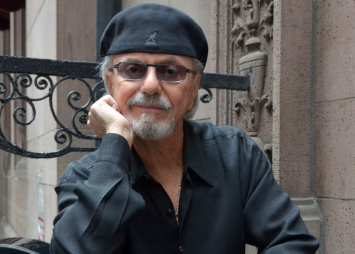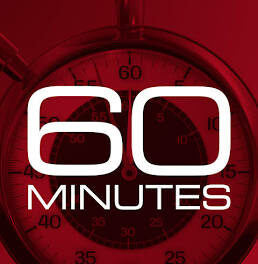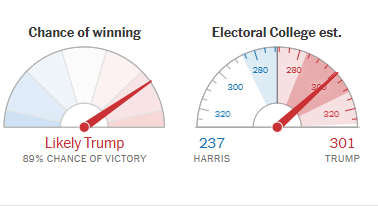We support our Publishers and Content Creators. You can view this story on their website by CLICKING HERE.
On Friday afternoon, I recorded a podcast with David Zimmer, who has provided security at three presidential inaugurations in D.C. and has worked with the Secret Service on a dozen or more presidential visits to Minnesota. So he knows how presidents are protected by the Secret Service and local law enforcement, inside and out.
Since we recorded the podcast on Friday, facts have continued to come out about Thomas Crooks’s assassination attempt, accompanied by the usual speculation and rumor. Today David posted this update: “Frustrations grow regarding Trump assassination attempt.”
I recommend it all; here are a few excerpts:
To be fair to those who are frustrated, there is plenty to be concerned about. Trump has been dehumanized and turned into a target by his political opponents, the media, and many on the left. We’ve also learned that the Secret Service has been aware of a credible threat by Iranian parties to kill Trump. In this atmosphere, it is valid to question how a 20 year old with no tactical experience could gain access to an elevated line of sight position, during a heavily secured rally, and fire three shots at Trump.
I’ve been assigned to a dozen or more presidential visits and three presidential inaugurations as a local law enforcement officer over the years. It’s inconceivable to me that there were gaps in planning that allowed for such access, but it is conceivable that there were gaps in carrying out the plan as designed. It’s not an excuse, but rather an explanation – an explanation that leans strongly towards errors in execution and not conspiracy.
Making sure that no one could access the buildings that were dangerously close to the event stage, with a clear line of sight, was perhaps the most obvious security imperative for this event:
How and why local law enforcement officers didn’t have the exterior of that building secured, and why the Secret Service liaison to local law enforcement didn’t ensure the same are questions that must be answered.
That was the basic point that David made last Friday. It was a horrific failure to implement elementary security measures. But some of what has come out in the last few days may be misinterpreted:
It has been reported that the building that Crooks fired from atop, was the staging building for the local law enforcement officers assigned assist the Secret Service in securing the event’s outer perimeter. It has also been reported that a local law enforcement sniper team was positioned inside that building looking towards to entrance of the event. While it may not be obvious, these facts undoubtedly complicated and delayed any response by Secret Service snipers once local law enforcement began responding to citizen reports of a man crawling on the roof.
Because, of course, the Secret Service snipers had to be sure that the man on the roof wasn’t one of ours.
As has happened so often in the Biden administration, the head of the Secret Service has only contributed to the confusion surrounding the assassination attempt:
The Director of the Secret Service, Kimberly Cheatle, has not helped in this area. Cheatle created a problem by giving an absurd answer to a reporter on Monday when asked why no sniper team had been placed on the roof that Crooks eventually fired from. Cheatle stated:
That building in particular has a sloped roof, at its highest point. And so, there’s a safety factor that would be considered there that we wouldn’t want to put somebody up on a sloped roof. And so, the decision was made to secure the building, from inside.
The answer was a poor one, especially given the photos circulating of the two Secret Service teams positions behind Trump on very obvious sloped roofs.
Cheatle, a former PepsiCo executive and, I assume, a Democratic contributor, has no business leading the Secret Service. But she wasn’t on site when the assassination attempt occurred, nor was she qualified to be, and nothing she says is likely to shed any light on what happened.
David discusses in detail the reports that have emerged regarding Crooks’s suspicious behavior for as much as three hours before the Trump rally. That behavior is, of course, significant in hindsight. But Crooks didn’t do anything that would nave interrupted Trump’s event:
From my experience, this type of activity would have generated a response by officers on foot to make contact with Crooks and determine whether he was a threat. It would not yet rise to the level of a threat that would have prevented the Secret Service from allowing Trump to take the stage inside the venue.
Of course, the law enforcement response that David says would be proper, didn’t happen.
Crooks never should have been allowed to climb on to the series of buildings from which he ultimately fired, while carrying a rifle. That was a terrible failure of basic security principles. But much of what has been said about what happened thereafter is dubious:
Crooks returned in front of the building for a third time, carrying a backpack. Again, from CBS reporting it is unclear how much time had elapsed or how much time remained before the shooting. Crooks walked away again, heading towards the back of the building. The local sniper called in the activity to the command post. Two officers on foot heard the radio call and responded. The local Sheriff has since reported that one of those officers was hoisted up to the edge of the roof by the other, and observed Crooks on the roof with a rifle while the officer was holding on to the edge of the roof with both hands. Crooks turned the rifle towards the officer who then let go and dropped to the ground to prevent being shot. The officers called in the threat to the command post. Seconds later Crooks began firing at Trump who was on stage.
One of the Secret Service sniper teams returned fire and killed Crooks within seconds.
The media reporting can be construed in hindsight as troubling, but the exact timing is not clear and it appears the notion that law enforcement should have viewed Crooks as an imminent threat for 3 hrs, or for 26 minutes, yet did nothing, is far from accurate. So is the notion that there was ample time for the information about Crooks having a gun to get to Trump’s protection team – it appears it was only seconds.
What is clear is that Crooks was seen crawling up on the backside of the roof by citizens about 1:19 seconds before firing his shots. Citizen videos capture this, and their attempts to flag down officers who were on foot looking for Crooks.
Many have questioned why the Secret Service’s snipers didn’t kill Crooks before he got off three rounds from his rifle. David addresses that question:
What is also apparent given the known timing is that Crooks was likely not visible to Secret Service snipers until he emerged at the peak of the roof seconds after being confronted by local police, and seconds before firing.
While many may suggest this was ample time for snipers to shoot Crooks, I caution the need to wait for the complete timeline and series of events to emerge from the investigation. The delay in time for the information to go from the officer on the ground to the command post and back out to the snipers is brief, but we are only talking about seconds here. Also, we need to keep in mind the complication presented by the snipers understanding that local law enforcement was responding to that roof. A second or two to orient what was being seen and to react is not unreasonable given the circumstances.
Related misinformation circling about the Secret Service having a policy requiring its agents to wait until given permission to shoot, or until a suspect has shot first, is completely wrong and needs to be dismissed by those fueling the cover-up/conspiracy angle. Secret Service agents, like all law enforcement officers, can use deadly force to proactively stop an imminent threat, and they don’t need “approval” to use that force.
The bottom line, based on the facts we know so far, is that there was an almost unbelievable security breach that allowed Thomas Crooks to climb up onto the buildings that gave him a clear view of the stage, while carrying a rifle. That isn’t a subtle failure, it is contrary to every principle of security. But it is not at all clear, based on what we know now–the radio logs are the most important information that is not yet public–that there were failures thereafter. That should become clearer as more information comes in.
But one thing we can say for sure is that no one–the Iranians, the “Deep State,” whoever–would have relied on poor Thomas Crooks, a 20-year-old with a borrowed rifle, reportedly such a poor shot that he couldn’t make a high school shooting team, to try to assassinate the next President of the United States.

 Conservative
Conservative  Search
Search Trending
Trending Current News
Current News 





